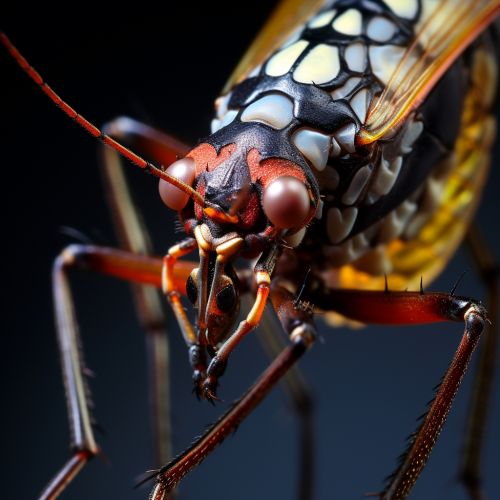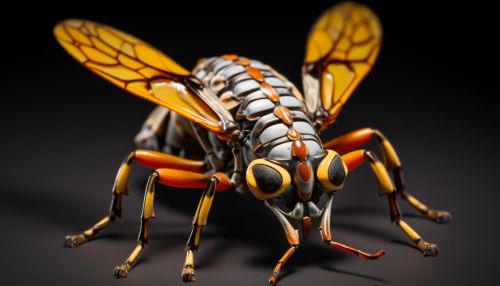Insect physiology
Introduction
Insect physiology includes the various physical and biochemical processes that occur within insects to allow them to carry out their daily activities. This encompasses a wide range of topics, from the basic structure and function of insect bodies, to the complex interactions between insects and their environment.
Anatomy
Insects, like all arthropods, possess a hard exoskeleton that provides both support and protection. This exoskeleton is composed of a substance called chitin, which is a strong, flexible material that is also lightweight. The exoskeleton is divided into segments, each of which has a pair of jointed appendages.


Insects also have a highly specialized and complex internal anatomy. This includes a variety of organs and structures, such as the brain, heart, digestive system, and reproductive organs. These are all interconnected and work together to ensure the insect's survival.
Nervous System
The insect nervous system is composed of a series of ganglia, or clusters of nerve cells, that are connected by nerve fibers. The largest of these ganglia is the brain, which is located in the head of the insect. The brain controls the insect's senses and behaviors, as well as coordinating the activities of the other ganglia.
Circulatory System
Unlike vertebrates, insects do not have a closed circulatory system. Instead, they have an open system in which the blood, or hemolymph, is not confined to blood vessels. The heart, located along the dorsal side of the insect, pumps the hemolymph throughout the body cavity, where it bathes the organs directly.
Respiratory System
Insects breathe through a system of tubes called tracheae. Air enters the body through small openings called spiracles, which are located along the sides of the body. From the spiracles, the air travels through the tracheae to reach the tissues. This system allows for direct oxygen delivery to the tissues, bypassing the need for a transport system like blood.
Digestive System
The insect digestive system is a long, tube-like structure that extends from the mouth to the anus. It is divided into three main sections: the foregut, midgut, and hindgut. Each section has a specific function in the digestion and absorption of food.
Reproductive System
Insect reproduction is typically sexual, with males and females having distinct reproductive organs. However, some insects can reproduce asexually through a process known as parthenogenesis. Insects also exhibit a wide range of reproductive strategies, from simple mating to complex courtship rituals and parental care behaviors.
Metamorphosis
Many insects undergo a process of development called metamorphosis. This is a dramatic transformation in which the insect changes from a larval form to an adult form. There are two main types of metamorphosis: complete and incomplete. In complete metamorphosis, the insect passes through four distinct stages: egg, larva, pupa, and adult. In incomplete metamorphosis, the insect hatches from the egg as a nymph, which gradually matures into an adult.
Conclusion
Insect physiology is a fascinating and complex field of study. Understanding the inner workings of these diverse and adaptable creatures can provide insights into a wide range of biological processes, from development and reproduction to digestion and respiration.
